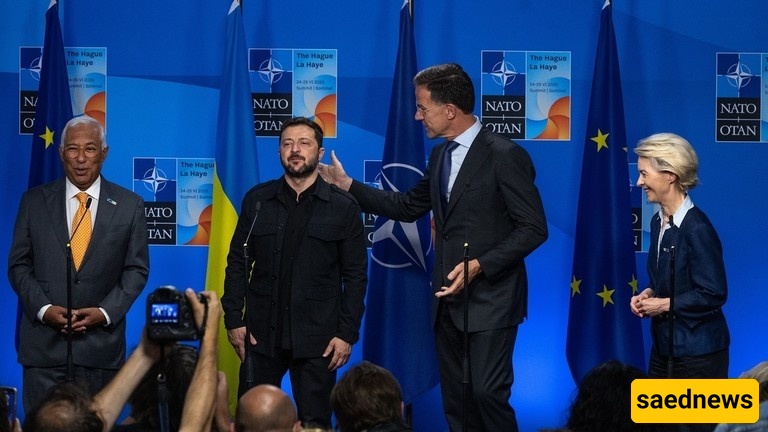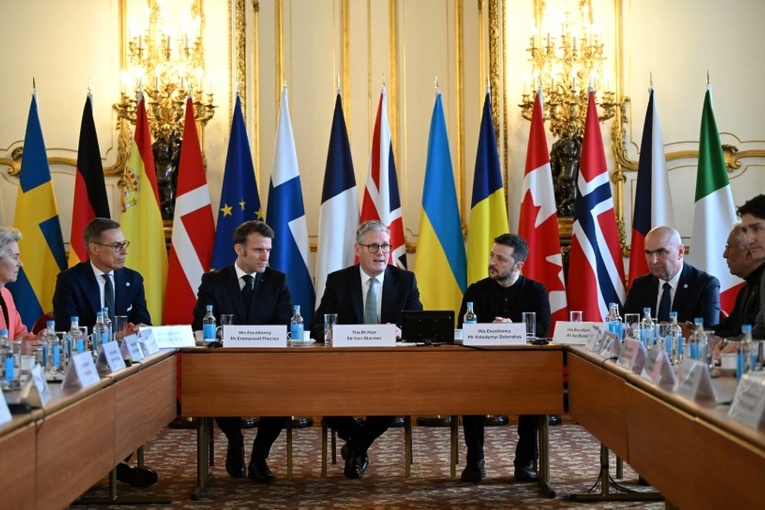SAEDNEWS: Senior officials from the United States, Ukraine, and European countries are gathering in the United Kingdom to strengthen Ukraine’s position ahead of the Trump–Putin summit.

According to SaedNews citing Russia Today, on the eve of the sensitive meeting between Vladimir Putin and Donald Trump, the political atmosphere in Ukraine is a mixture of concern, ambiguity, and efforts for a swift response. Axios reports that senior Ukrainian, American, and European officials are set to convene in the United Kingdom to coordinate their positions. The main reason for this emergency meeting is Trump’s recent call with Putin and his ambiguous remarks, which in Kyiv have been interpreted as a sign of a possible shift in Washington’s direction.

A few days ago, U.S. President Donald Trump spoke in a phone call with Vladimir Putin about “stabilizing positions” in the Ukraine war. This brief but ambiguous phrase was interpreted by analysts as a potential behind-the-scenes deal over territory or peace terms.
While the White House described the conversation as a “normal part of diplomacy,” Kyiv was swept by a wave of doubt: Is the U.S. ready to make concessions to Russia? Will Ukraine be sidelined in future negotiations?
In response to this ambiguity, senior Ukrainian officials decided to meet with their key supporters — including the U.S., the U.K., Germany, and France — ahead of the Putin-Trump meeting. The goal of this session, which is planned to be informal but intensive, is to achieve a unified and clear stance against any potential peace proposals or deals.
A European official told Axios, “We do not want to wake up the day after the Putin-Trump summit to a surprise agreement.”
This event once again demonstrates that the diplomacy surrounding the Ukraine war operates on several simultaneous layers:
First layer: Formal negotiations between Ukraine and its allies concerning military and financial aid.
Second layer: Direct talks between major powers like the U.S. and Russia that may occur without Ukraine’s presence.
Third layer: Covert or semi-formal contacts that lay the groundwork for broader agreements.
For Ukraine, the main danger lies in the second layer; where major decisions might be made without Kyiv’s direct involvement.
Ukrainians are well aware of the history of great power negotiations. The experience of Yalta in 1945 — where the fate of post-war Europe was decided without the participation of smaller states — still vividly lingers in the region’s collective memory.
For this reason, any sign of bilateral talks between Washington and Moscow, even if seemingly harmless, is closely monitored in Kyiv with heightened sensitivity.
If this meeting leads to a new framework for “frontline stabilization,” several scenarios are possible:
Scenario one: War halts along current contact lines, effectively preserving Russian control over occupied areas.
Scenario two: A temporary ceasefire agreement with a commitment to further negotiations, which could gradually erode Ukraine’s position.
Scenario three: A direct deal involving territorial exchange or recognition, which would be a strategic defeat for Ukraine.
European countries, deeply concerned about the ongoing war and its economic consequences, hold a dual position. On one hand, they seek a quicker end to the conflict; on the other, they do not want a peace imposed that violates international law principles.
As a French diplomat said, “Any agreement must have Ukraine’s consent, otherwise the foundations of the global order will be further eroded.”
Analysts identify several factors driving this rush:
Trump’s electoral calculations — demonstrating capability in resolving global crises.
Putin’s opportunism — leveraging the new political atmosphere in Washington to advance Moscow’s interests.
Economic and military pressure — both sides recognize the enormous costs of prolonging the war.
Domestically, Zelensky’s government faces added pressure: on one hand, the need to continue resistance and maintain public morale; on the other, the necessity to avoid diplomatic isolation.
Any negative perception of the Putin-Trump meeting could become a political tool for Zelensky’s opponents and affect internal stability.
Hosting the coordination meeting, Britain seeks to act as a bridge between Ukraine and the U.S. The country has been a staunch supporter of Kyiv since the war began and now aims to ensure Ukraine’s voice is heard in any negotiation.
Regardless of the outcome of the Putin-Trump meeting, one clear fact remains: the balance of power in the Ukraine issue is rapidly changing. The more Western military and financial support becomes uncertain or decreases, the freer Moscow’s hand in diplomacy will be.
The emergency allies’ meeting in the UK is a response to the risk of Ukraine’s sidelining in decision-making. Kyiv is trying to secure guarantees that no agreement will be signed without its presence and consent. However, the reality of international politics is that in major deals, power and interests often take precedence over principles.
The main question is whether Ukraine and its allies can develop a common roadmap before the Putin-Trump summit that prevents any unilateral deal. The answer to this question may well shape the future of the war and even the security order of Europe.

